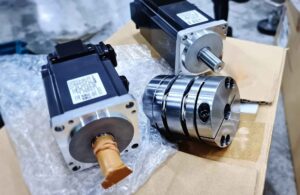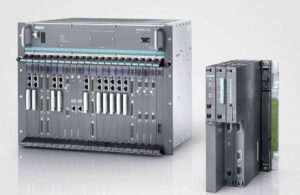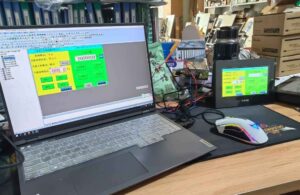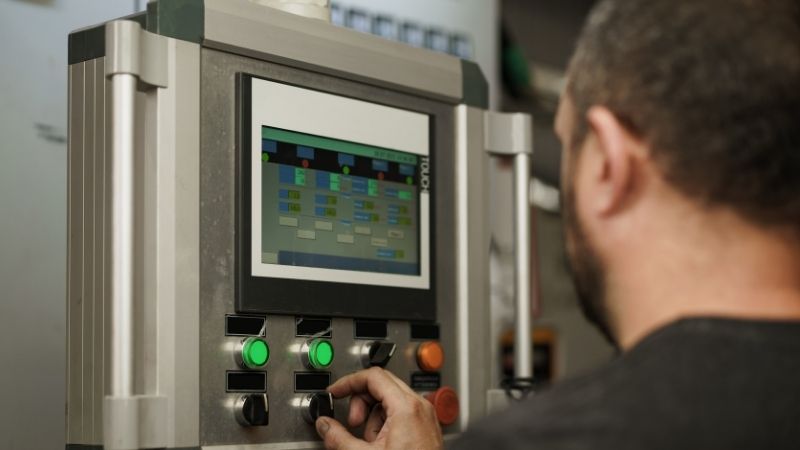Bagaimanakah PLC Mengawal Injap Solenoid?
Nasib baik, menggunakan Pengawal Logik Boleh Aturcara (PLC) boleh menyelaraskan proses ini, memberikan ketepatan dan kecekapan.
Sebagai seorang jurutera di Kwoco, saya telah melihat secara langsung bagaimana PLC memudahkan tugas automasi. Dengan menyambungkan PLC kepada injap solenoid, kami boleh mengautomasikan operasi yang memerlukan campur tangan manual. Ini bukan sahaja menjimatkan masa tetapi juga meningkatkan keselamatan dalam persekitaran yang berpotensi berbahaya.
Jadual Kandungan
Apakah Injap Solenoid?
Injap solenoid ialah peranti elektromekanikal yang mengawal aliran cecair dan gas. Ia terdiri daripada dua bahagian utama: gegelung solenoid dan badan injap. Bergantung pada reka bentuk, injap solenoid boleh dibuka secara normal (NO) atau biasanya ditutup (NC). Ini bermakna ia sama ada membenarkan atau menyekat aliran bendalir tanpa memerlukan pelarasan manual yang berterusan.
Apabila gegelung solenoid ditenagakan, ia menghasilkan medan magnet yang menggerakkan pelocok dalam badan injap. Tindakan ini sama ada membuka atau menutup injap, mengawal aliran media. Memahami mekanisme ini adalah penting untuk mana-mana jurutera yang bekerja dalam sistem kawalan bendalir.
Apakah Faktor yang Perlu Anda Pertimbangkan Semasa Memilih Injap Solenoid?
Apabila ia datang untuk memilih injap solenoid, anda mungkin berasa terharu dengan pilihan yang ada. Memilih injap yang betul adalah penting, kerana pemilihan yang salah boleh menyebabkan ketidakcekapan operasi dan peningkatan kos. Memahami perkara yang perlu dicari boleh memudahkan proses ini.
Ringkasnya, berikut adalah faktor utama yang perlu dipertimbangkan:
- Jenis Injap Solenoid: Pertimbangkan sama ada anda memerlukan injap dua hala, tiga hala atau empat hala. Ini bergantung pada aplikasi anda dan kawalan aliran yang dikehendaki.
- Tekanan dan Suhu Operasi: Pastikan injap boleh mengendalikan keadaan tekanan dan suhu sistem anda. Melebihi had ini boleh menyebabkan kegagalan injap atau operasi yang tidak selamat.
- Keserasian Media: Sahkan bahawa bahan injap serasi dengan cecair atau gas yang akan dikawalnya. Mengelakkan tindak balas kimia yang boleh merosakkan injap adalah penting.
- Keperluan Voltan: Tentukan sama ada anda memerlukan injap AC atau DC, dan semak voltan yang diperlukan untuk operasi. Ini boleh menjejaskan pemasangan dan penyepaduan dengan sistem sedia ada anda.
- Masa Respons: Untuk aplikasi yang memerlukan penggerak pantas, pertimbangkan masa tindak balas injap. Ini boleh memberi kesan kepada kecekapan keseluruhan sistem anda.
- Saiz dan Kadar Aliran: Saiz injap harus sepadan dengan sistem paip anda, dan kadar alirannya mesti memenuhi keperluan aplikasi anda. Injap bersaiz tidak betul boleh mengurangkan kecekapan atau meningkatkan kehausan.
- Kualiti dan Kebolehpercayaan: Pilih injap daripada pengeluar terkemuka yang terkenal dengan kualitinya. Kualiti memberi kesan kepada kos penyelenggaraan dan kebolehpercayaan operasi.
- Kos lwn. Nilai: Walaupun kekangan belanjawan adalah penting, pertimbangkan nilai keseluruhan yang ditawarkan injap dari segi prestasi dan jangka hayat. Melabur dalam produk berkualiti boleh membawa kepada penjimatan jangka panjang.
Dengan mengingati faktor ini, anda boleh membuat keputusan termaklum yang meningkatkan kejayaan projek anda.
Bagaimana PLC Berfungsi dengan Injap Solenoid
Injap solenoid adalah penting dalam hampir setiap sistem kawalan bendalir. Mereka mengautomasikan aliran cecair dan gas, menjimatkan masa dan mengurangkan risiko kesilapan manusia. Untuk kawalan yang tepat, menggunakan PLC untuk menguruskan injap solenoid adalah pilihan yang bijak.
Apabila PLC mengeluarkan voltan, ia memberi tenaga kepada solenoid, membolehkan bendalir mengalir. Sebaliknya, memotong voltan menyahaktifkan solenoid, menghentikan aliran. Mekanisme kawalan yang mudah tetapi berkesan ini adalah kunci dalam pelbagai aplikasi perindustrian.
Memahami cara menyambungkan PLC kepada injap solenoid boleh meningkatkan prestasi sistem anda. Modul keluaran PLC bersambung terus ke gegelung injap solenoid. Apabila titik keluaran yang sesuai menerima voltan, gegelung solenoid diaktifkan, melibatkan injap.
Untuk pemasangan yang memerlukan arus tinggi, seperti solenoid 24V, gunakan bekalan kuasa luaran dan geganti perantara untuk menguruskan beban dengan selamat. Ini memastikan PLC anda kekal dilindungi dan beroperasi walaupun semasa litar pintas.
Kuasakan projek anda dengan Omron, Mitsubishi, Schneider PLC yang baharu dan asli – dalam stok, sedia sekarang!
Kesimpulan
Mengawal injap solenoid dengan PLC ialah cara yang cekap untuk mengautomasikan sistem kawalan bendalir. Dengan memahami prinsip operasi, anda boleh meningkatkan hasil projek anda dan memastikan keselamatan dan kebolehpercayaan.
Mencari PLC baharu yang asli untuk projek anda? Di Kwoco, kami menyimpan PLC terkini daripada jenama terkenal seperti Omron, Mitsubishi, dan Schneider. Beli dengan yakin—penghantaran pantas, kualiti terjamin! Beli Sekarang.
Hubungi Kami
Cuma isi nama, alamat e-mel dan penerangan ringkas tentang pertanyaan anda dalam borang ini. Kami akan menghubungi anda dalam masa 24 jam.
Anda Juga Mungkin Mendapatkan Topik Ini Menarik

Servo Motor vs Normal Motor: Perbezaan Utama Diterangkan
Satu soalan yang sering timbul ialah, "Apakah perbezaan utama antara motor servo dan motor biasa?" Memahami perbezaan ini adalah penting bagi sesiapa sahaja yang ingin memilih motor yang sesuai untuk aplikasi mereka.

Pengawal SIMATIC Siemens: Otak Di Sebalik Automasi Lancar
Catatan blog ini menyelidiki dunia pengawal Siemens SIMATIC, menjelaskan mengapa mereka merupakan asas automasi industri moden dan menyerlahkan faedahnya untuk kilang mesin dan peralatan, pengilang dan syarikat penyelesaian kilang. Kami berhasrat untuk menunjukkan cara pengawal SIMATIC boleh mengubah operasi anda, meningkatkan kecekapan, dan akhirnya, memacu keuntungan. Sebagai sebuah perniagaan yang mengkhusus dalam automasi industri dan produk kawalan industri untuk kilang pembuatan, kami memahami peranan penting yang dimainkan oleh sistem kawalan yang boleh dipercayai dan boleh disesuaikan dalam landskap kompetitif masa kini.

Apakah Pengaturcaraan PLC? Tutorial Pengenalan tentang Pengaturcaraan PLC
Dalam pengeluaran komersial moden, program PLC (Programmable Logic Controller) sebenarnya telah bertukar menjadi salah satu inovasi automasi yang penting. PLC digunakan secara meluas dalam sistem kawalan automasi perindustrian, dan prestasi, integriti dan serba bolehnya sebenarnya telah menggantikan sistem kawalan geganti biasa dengan cekap.





